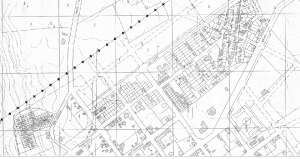Stories
Mapping Access to Toilets between Social Groups | Data Stories
The map below reflects that difference in access across districts. For each district, I calculated the percentage of dalit/tribal households with access to a toilet at home. I did the same calculation for households which were neither dalit nor tribal, as classified by the census. By dividing the two, we get a measure of how disparate the access is. For instance, in the district of Budaun, where the crime occurred, 15% of dalit homes according to the 2011 census, had access to a toilet at home, compared with 35% of non-dalit or non-tribal homes. This gives me a disparity measure of about 0.43 (15% divided by 35%). And so on for each district.
Why Punjab still holds aloft the flag of ‘new politics’
While the entire country appeared unimpressed by the Aam Aadmi Party and its promises, Punjab not only sent four of its candidates to the Lok Sabha, but as recent data shows, also overcame the rural-urban divide in its mandate for the party. Srinivasan Ramani explores why.
El Nino may cause weak monsoon & high prices; poses serious challenge to Modi government
As the chart on the next page (El Nino and the Indian Monsoon…) shows, strong El Nino conditions (the shaded region to the right) usually occur along with a weak monsoon. But note that there have been cases, most notably in 1997, when a very strong El Nino was accompanied by a normal monsoon.
Here’s What a Polarized Vote Looks Like
The chart below shows what that change means in a visual sense. It looks at the vote share of the biggest party in each of the 1500 or so polling stations in the constituency, and then plots those values according to how often they occur. So for instance, there were a relatively few polling stations where the largest party got 40% of the vote or below. There were many more with 60% or more of the vote in a booth. And so on. The number of polling stations where the largest party received any given vote share (from 0 to 1), can be read off the y-axis.
Average Daily Wage Rate in Rural India is up on data.gov.in for you to explore.
GoeBlr meet up in Bangalore
Other Good Reads
Visualizing Algorithms : Algorithms are a fascinating use case for visualization. To visualize an algorithm, we don’t merely fit data to a chart; there is no primary dataset. Instead there are logical rules that describe behavior. This may be why algorithm visualizations are so unusual, as designers experiment with novel forms to better communicate. This is reason enough to study them.






